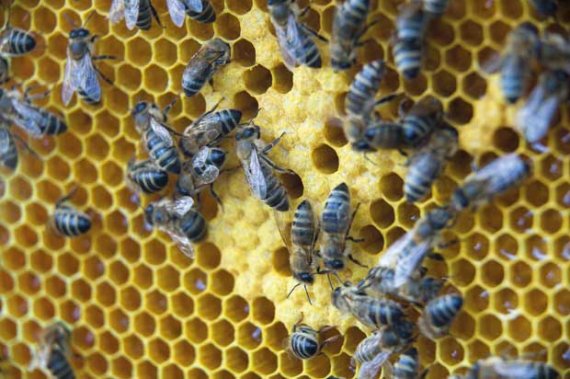A study by bee researchers at Wageningen UR shows that an infection with varroa has a permanent effect on bees and giving them extra food does not help. Much is already known about the effects of an infection by the varroa mite on bee colonies. The mite is seen as one of the key causes of bee deaths. Particularly during food shortages, it can soon mean an end to a bee colony. Bee researcher Coby van Dooremalen studied the combined effects of varroa and the availability of pollen on individual young bees in the lab. To do this, she measured the growth – and the stock of protein – in the first week in the life of of young bees, varying whether or not they were infected and were getting enough pollen. The results were clear, says Van Dooremalen. ‘The negative effects of varroa are not compensated by having enough to eat. Opinions were divided on this up to now. There are also studies indicating that this is possible.’ Van Dooremalen says the experiment shows how destructive infection by varroa is. ‘The first 10 days are crucial in the life of a bee. That is when they create a stock of protein that will have to get them through the winter. Our experiment shows how much infection with varroa at birth slows down growth and protein stocks.’ And the depleted stocks can never be replenished. Van Dooremalen says this is because the varroa mites cause permanent damage to important metabolic processes so that the bees are no longer able to make optimum use of the pollen. Reserves If there is a lack of pollen, nurse bees start using up their protein. Van Dooremalen’s measurements show that this is at the expense of the stomach but not the head. ‘So they are using up their own reserves in order to spare the food glands in their head. Sacrificing everything for the colony seems to be the rule. That has already been demonstrated for other insects but not for bees as far as I know.’ The results apply to individual bees in the lab but something similar is happening for entire colonies out in the field. That is shown by the follow-up research Van Dooremalen is now working on. ‘You see that the varroa factor has a huge effect there too.’
New evidence for harm done by varroa Mite
Extra food no help to infected bee.Damaging effect on growth cannot be undone.

